Drawing Journal Suitable for Ink and Pencil
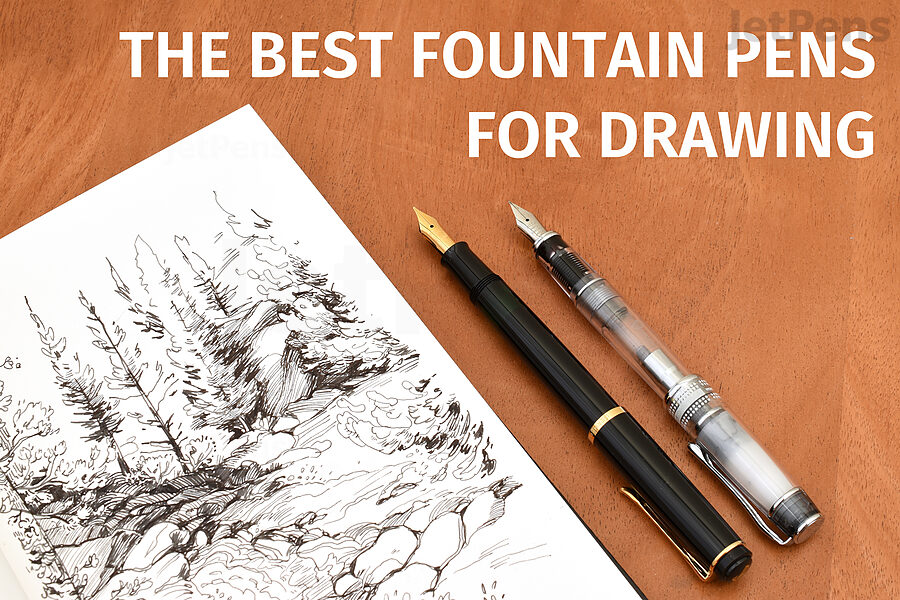
While fountain pens are most often used for writing, they're also a valuable tool in any artist's arsenal. Their wide range of ink colors and nib styles allows customization to suit any drawing style. Plus, in the long run, investing in a good-quality refillable fountain pen can benefit you and the environment. Read on to learn what factors to consider when drawing with a fountain pen and our top selections for your kit.
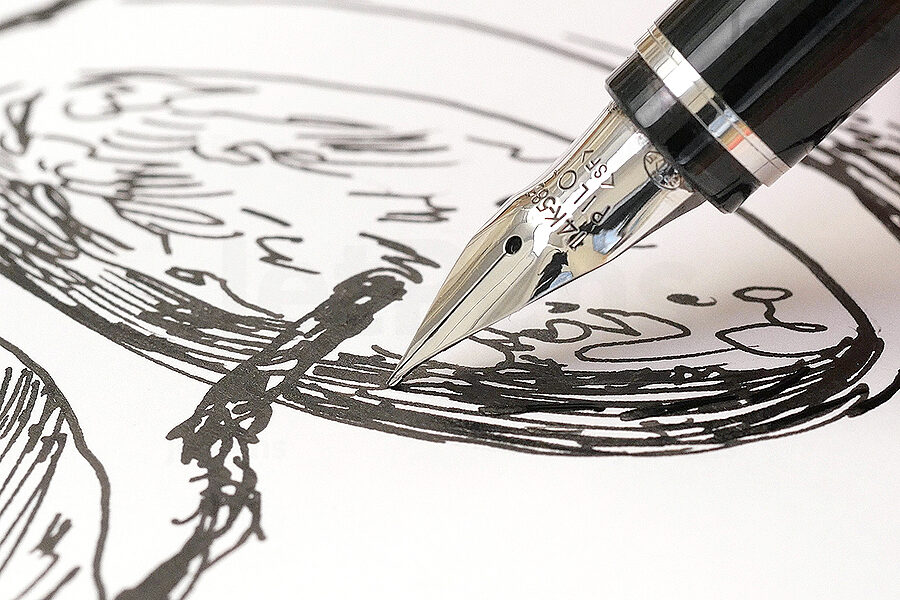
Why Draw with a Fountain Pen?
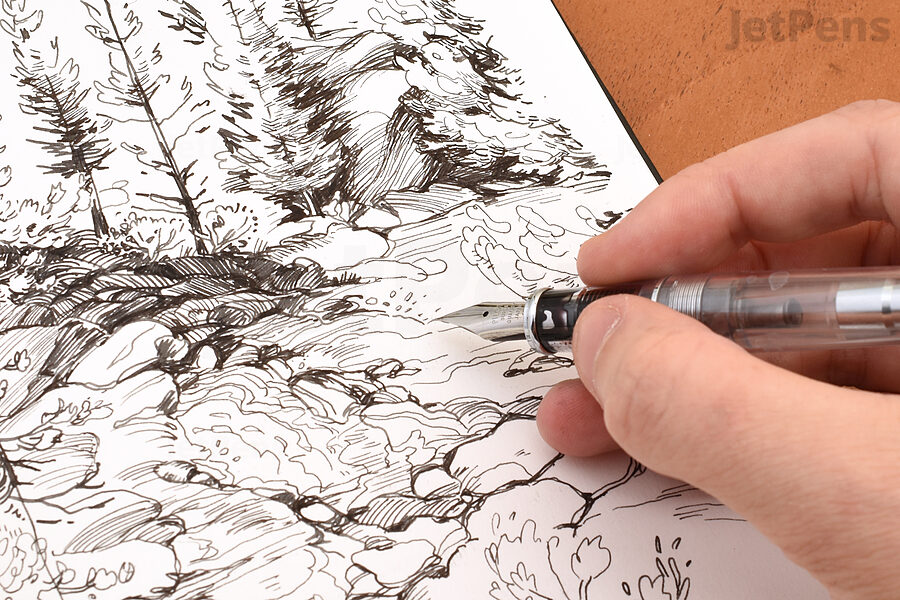
Fountain pens are a delightful drawing tool.
Fountain pens do a fantastic job of drawing precise, fluid linework. They're far easier to transport than dip pens yet more spontaneous and lively than fineliners if you plan to sketch on the go. Drawing with ink teaches confidence, plus the ability to compromise when lines don't quite go the way you want.
When you consider the cornucopia of nib sizes and ink choices they let you combine, it's easy to see why fountain pens are prized tools for the illustratively inclined.
The Best Fountain Pens for Drawing
Best Lightweight Fountain Pen for Drawing: Pilot Prera
The Pilot Prera had our favorite nib of the pens under $50 we tested, precise and slightly springy. The pen is light in the hand and zippy to draw with, with an ink flow that keeps up with fast movements of the hand. It uses cartridges but can take converters.
The Prera is a more polished older sibling to the weightier Pilot Metropolitan, beginner-friendly Pilot Kakuno, and long-bodied Pilot Penmanship, all of of which we highly recommend as affordable options. The Kakuno and the Penmanship even have extra-fine nibs. Feel free to mix and match—all nibs can be swapped between members of this family of pens.
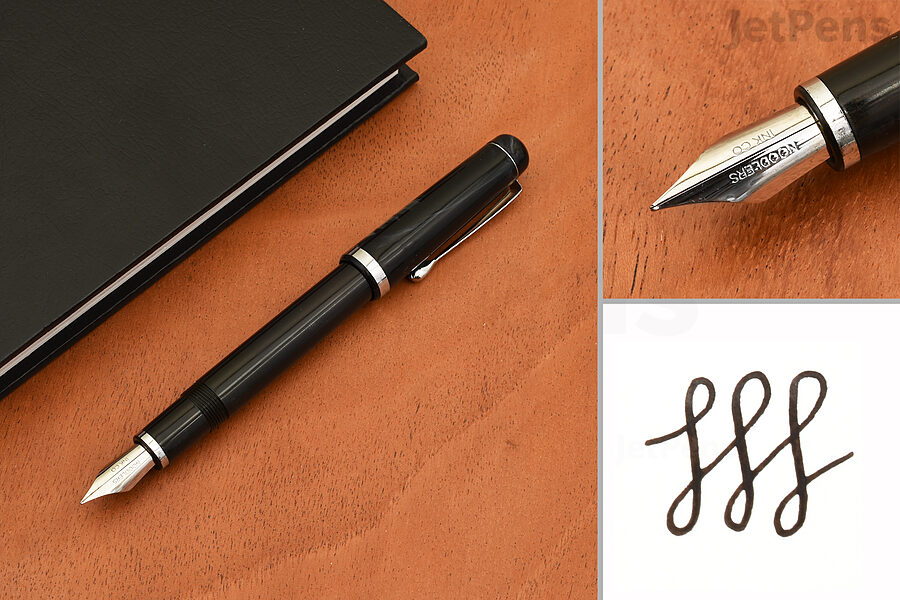
The Noodler's Konrad Flex has a broad nib with a hint of flexibility to it. While you have to apply significant pressure for line width variation, it's a great way to get an idea of what a flexible nib can do for your art. Noodler's pens are best for those who enjoy tinkering with their fountain pens, and may not work exactly as you wish if you haven't spent a little time on customization. The piston filling mechanism can hold more than a converter and makes it easy to use your favorite ink.
For additional flex, but wetter lines that aren't ideal for drawing out the go, investigate the Noodler's Triple Tail. If you want a less-finicky flex option and are willing to invest in quality, look into the Pilot Falcon.
If you aren't sure whether a fountain pen is for you, experiment with the affordable, disposable Zebra Zensations. It works right out of the packaging with no cartridge installation necessary (with the trade-off that you won't be able to customize or refill its ink). The Zensations writes smoothly and comes with water-soluble ink in a range of vibrant colors, suitable for further experimentation with ink washes.
Best Durable Fountain Pen for Drawing: LAMY Safari
The LAMY Safari, made out of sturdy ABS plastic, is practically indestructible. If your primary concern is a pen you can adventure with, add a Safari to your kit. It writes smoothly, though it isn't our top pick for detail or line weight variation—European nib sizes are larger, as we note below. The Safari uses either cartridges or a LAMY converter and comes with a cartridge of blue ink instead of the usual black.
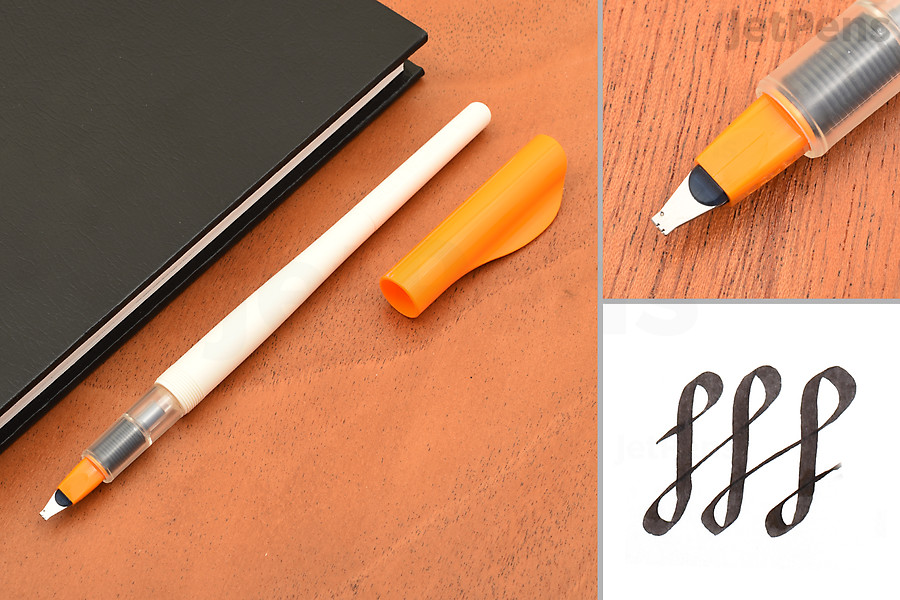
A nib made of two metal plates makes the Pilot Parallel great for broad lines and careful detail.
The Pilot Parallel isn't a conventional calligraphy pen, as its nib is made of two parallel metal plates. Ink flows smoothly through the space between them. We recommend its smaller nibs (1.5 mm and 2.4 mm, pictured here) for an impressive yet still controllable range of line weights. The corners of the nib can be used for fine detail, and the full width can easily shade a large area. It comes with cartridges of black and red ink and, as a bonus, it's one of the most affordable pens in this guide.
For a more traditional calligraphy option, we also recommend the LAMY Joy.
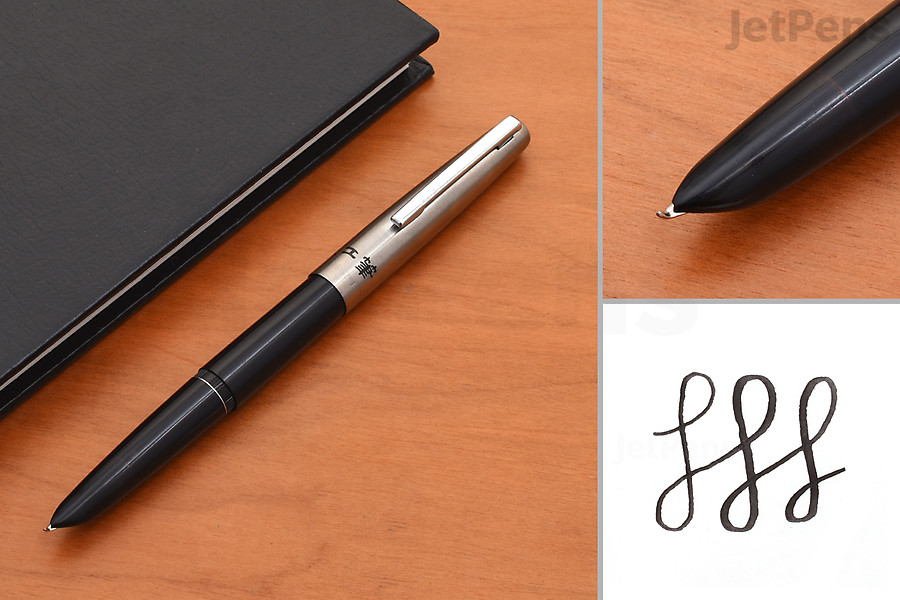
The upturned tip of the Hero 330 Fude Nib Fountain Pen offers fantastic line width variation. Lines made with a fude nib change width with the angle at which the pen is held to paper. Positioning the nib at a natural-feeling forty-five-degree angle, this pen writes with bold, chunky strokes and easily fills in large areas of ink. With the nib held almost perpendicular to the page, the pen makes narrow and delicate marks. This nib works well for both energetic sketches and careful details. The pen is lightweight and won't fatigue your hand. It includes a squeeze converter.
Best Gold Nib Fountain Pen for Drawing: Pilot Falcon
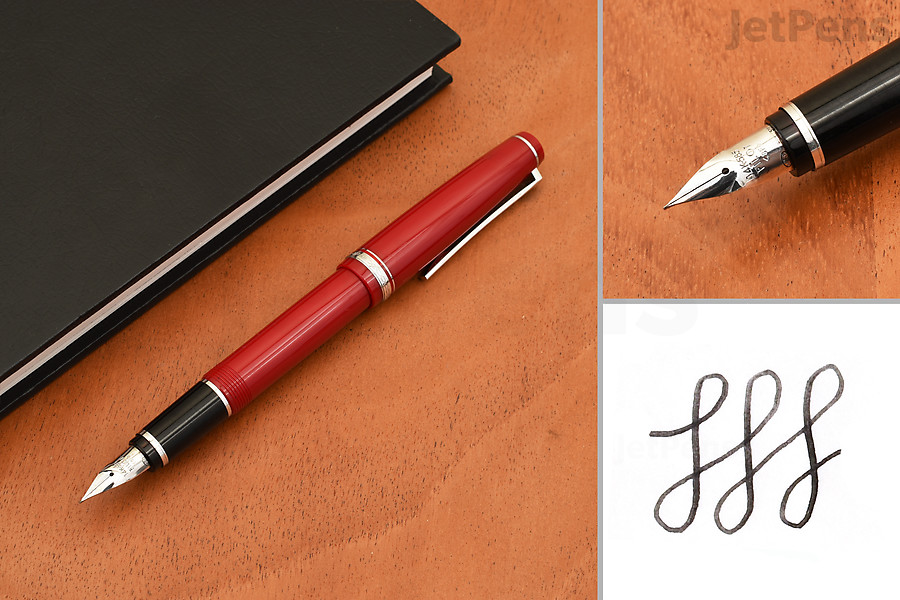
The Pilot Falcon's unique nib is prized by artists worldwide.
The Pilot Falcon has a special beak-shaped nib made from 14k soft gold that creates lines like brush marks. Unlike a brush pen, it's still easy to precisely control fine details. Artists all around the world laud the Falcon. Though the gold nib comes with a larger price tag, it dramatically out-flexes almost all steel. If you're ready to invest in a gold-nibbed pen, make the Falcon your pick.
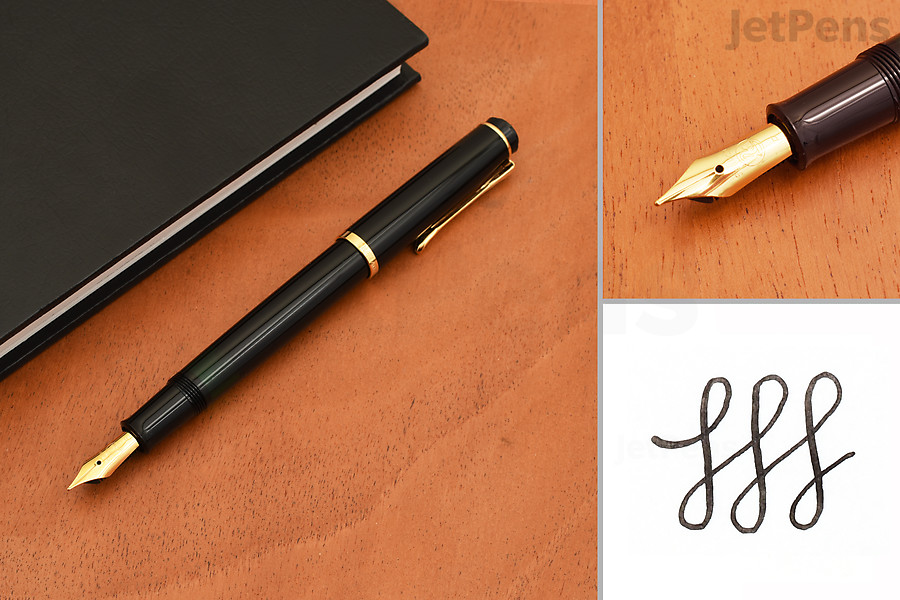
The Pelikan Classic M200 has a nib made of pleasantly bendy stainless steel plated with gold. It's more flexible in the fine size than the extra fine, so be aware of your selection. With that said, Pelikan nibs run wide compared to Japanese brands and even to other European nibs.
The Classic M200 is compact and lightweight, but still has a generous ink reservoir that's easy to refill with its piston mechanism. Drawing with it is easy and joyful, and if there's room in your budget it's worth the price.
Selecting a Nib for Fountain Pen Drawing
Fountain pens come with a staggering variety of nib options. It's important to consider nib shape, nib flexibility, and nib size.
Nib Shape
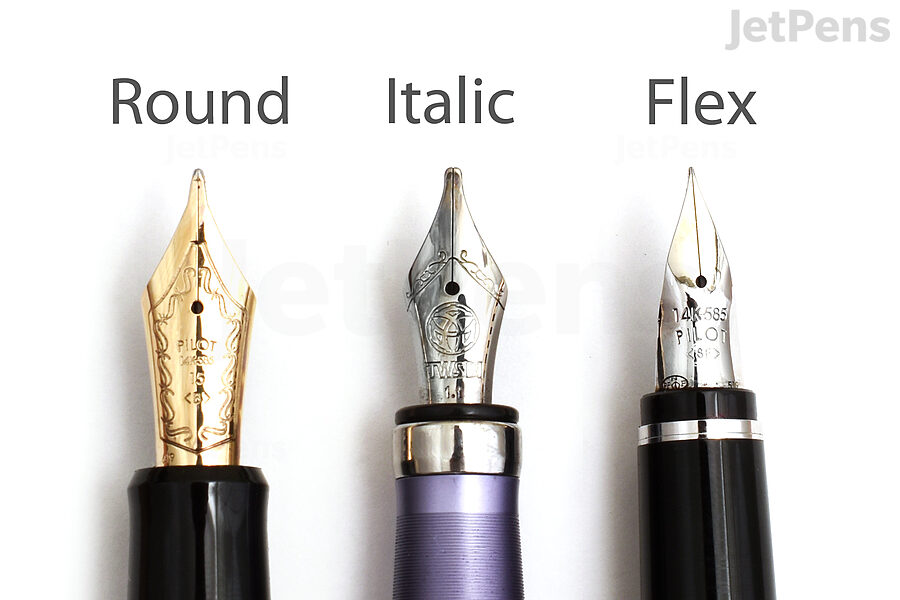
Most fountain pen nibs have round tips, but italic styles used for calligraphy can add dimension and surprise to your drawings. Round nibs write with lines of more consistent width, while lines drawn by italic nibs dramatically change width depending on the angle of the pen and direction of the stroke.
A few rarer nib shapes, not pictured here, include fude nibs and zoom nibs. Fude nibs have a distinctive ski-jump look and zoom nibs are thicker at the very tip. Both let an artist control line width by changing the angle between pen and paper.
Nib Flexibility
The more flexible a nib, the more variation your lines will have. A more flexible nib is also likely to be more expensive, as the best way to combine softness and durability is by making a nib from gold. Generally speaking, Flex nibs made from steel are less expensive but require more pressure (and potentially more hand fatigue) to create dynamic lines.
Nib Size
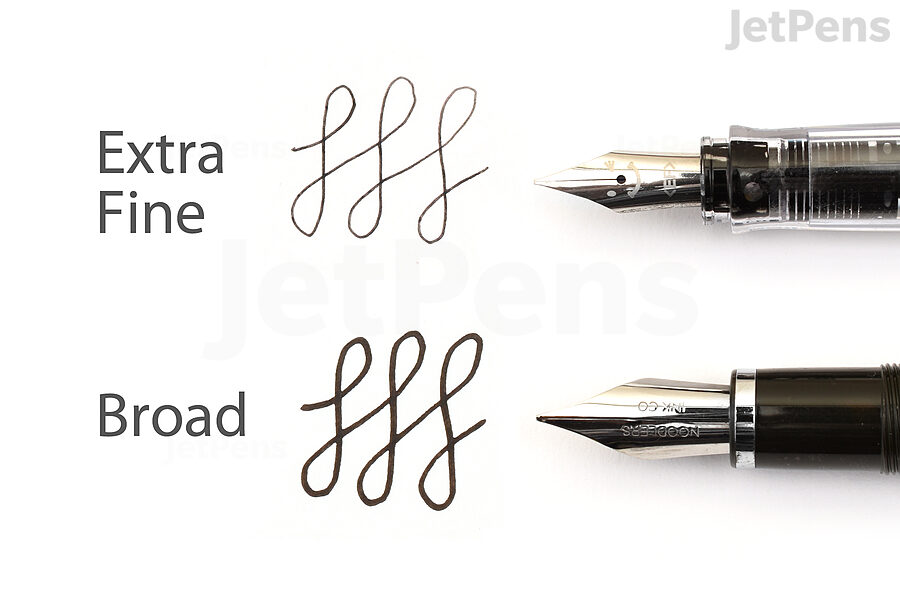
Your nib size should be selected with an awareness of the scale at which you like to draw. If you usually draw in a tiny portable sketchbook, pick a fine or extra fine nib. If you have big dreams, scale up and pick a medium nib or a calligraphy nib. Check the brand of the pen as well as the name of the nib size, as Japanese brands typically have much smaller nibs than other brands. You can also use fountain pens with different nib sizes in the same drawing to combine strong outlines with delicate details.
Selecting an Ink for Fountain Pen Drawing
Before you pick an ink, double-check to see if the pen you love takes ink cartridges or uses a piston filling mechanism. If the former, investigate if the pen takes converters—you'll need one to easily use bottled ink.
Water-Soluble Inks
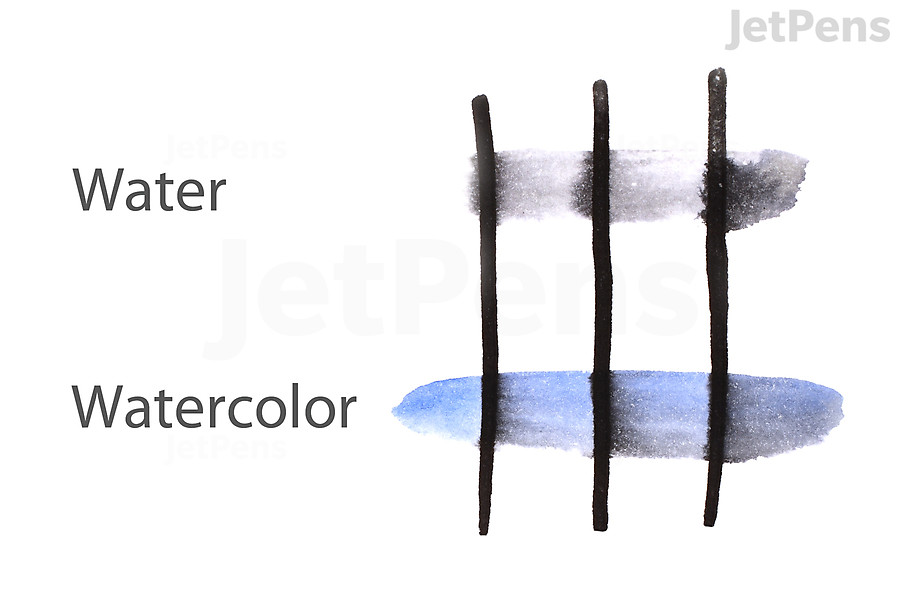
Water-soluble inks are reactive to water even when dry.
Most fountain pen inks, including inks that come in cartridges, are water soluble. Water-soluble inks are gentler on the pen and easier to clean out when you want a change, plus they offer a wider array of vibrant colors. When you use a water brush on water-soluble inks, they bleed and bloom, making it easy to incorporate ink washes into a drawing.
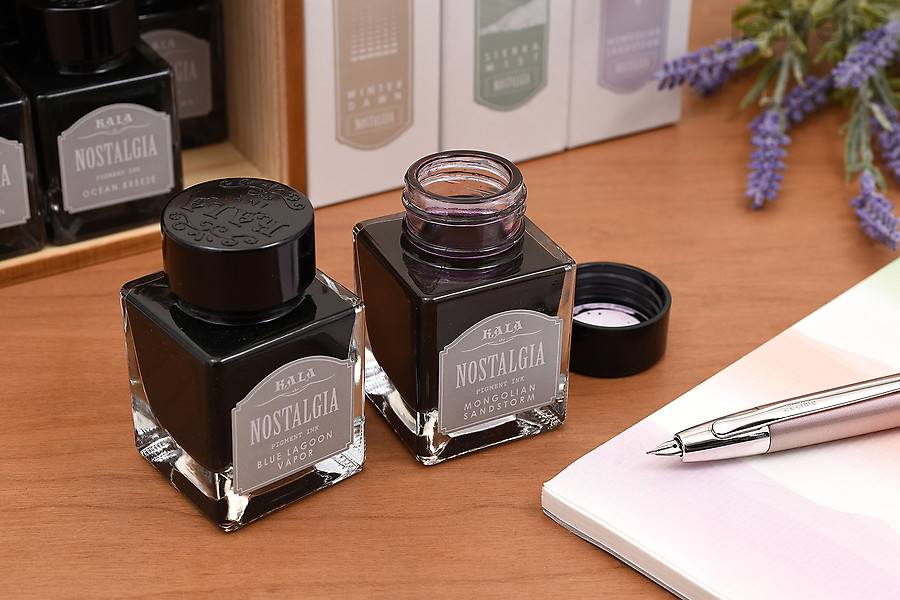
Waterproof Inks

Waterproof inks are ideal for use with watercolor.
While a little more dangerous for the health of your pen, waterproof inks are a must if you plan to incorporate watercolors or water-based markers over your lines. Be sure to use a pen filled with water-resistant ink frequently and clean it once a month to prevent clogging. If you don't feel fully confident in your cleaning schedule, keep your waterproof inks to cheaper pens.
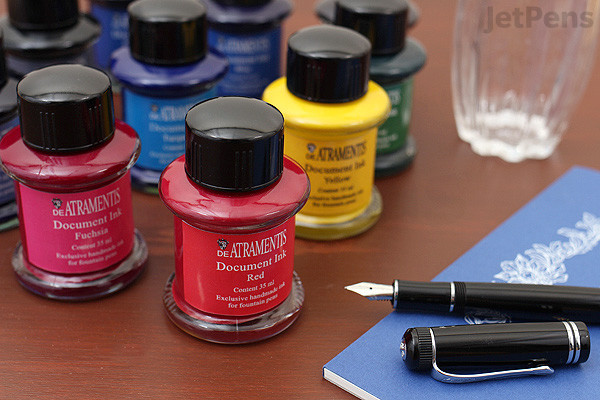
One of our top picks for waterproof ink drawing is De Atramentis Document Ink. While an expensive initial investment, its many vivid colors (including black) can be combined into any custom shade you can imagine. You can buy cyan, yellow, and magenta and mix as many colors as a photo printer. It's also truly permanent, making it perfect for the professional artist.
Another favorite is Rohrer & Klingner sketchINK. Its colors are slightly more muted and translucent, which allows you to layer lines for depth and dimension. Last but certainly not least, glossy, opaque Platinum Carbon Black is prized by artists around the world for its intense darkness.
For more options, investigate our guide to waterproof inks.
Selecting Paper for Fountain Pen Drawing
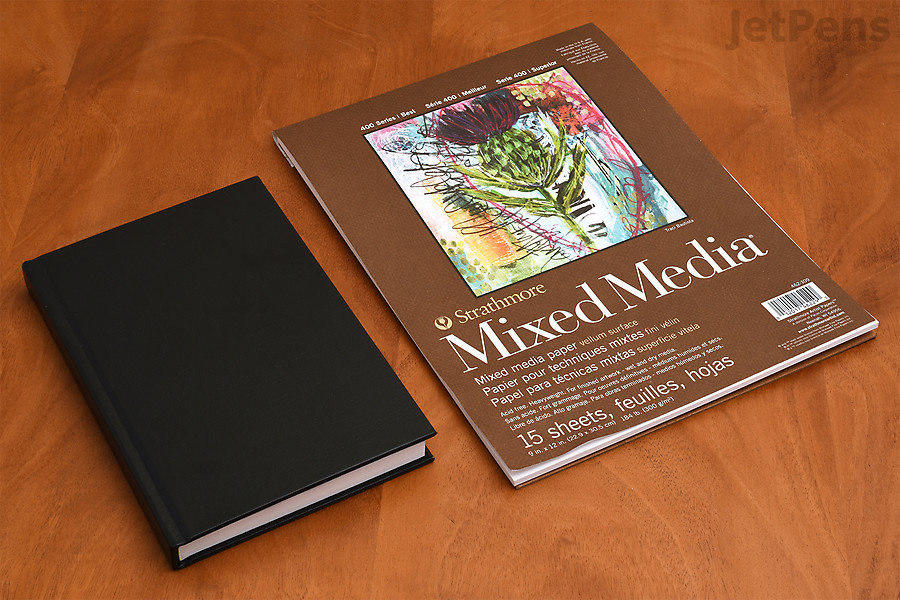
Fountain pens write their best on smooth paper. For sketchers on the move, we recommend Stillman & Birn Alpha and Zeta sketchbooks. The Alpha has a slightly rougher tooth that will be ideal if you want to incorporate colored pencils or other dry mixed media, while the Zeta has smooth, extra heavyweight paper suitable for additional water brush usage. If you're looking for a drawing pad for staying in one place, the larger Strathmore 400 Series Mixed Media Pad has thick paper that will hold up to all the ink you can throw at it.
Tips for Drawing with a Fountain Pen
Transportation
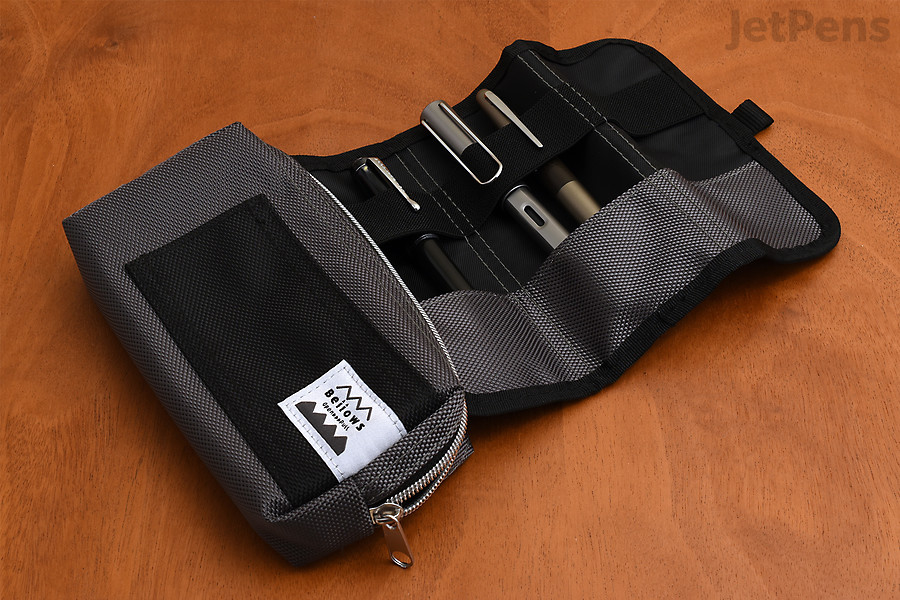
When transporting a fountain pen, keep in mind that they don't like to be jostled. You can reduce chances of leakage by storing your pen in a case with the tip pointing up. If worst comes to worst, only the feed will be able to leak, not the whole reservoir. Keep your fountain pen safer in a case with individual loops like the Concise Bellows Pen Case. This also will prevent other pens in the case from bumping against the pen and scratching it.
Drawing Techniques

As we mentioned, a water brush can be used to create ink washes. This works best on loose, organic drawings, as lines will fuzz and you may not have precise control over the effects.
For most pens, the "wrong side" of the nib, flat on the paper, can draw wide swathes of ink. Instead of scribbling over and over to cover an area, try this instead.
Texture is a key tool in adding liveliness to your drawing. But consider your use of negative space and balance your ink with the blank page.
Carry multiple fountain pens with you with different inks. One water-soluble ink and one water-resistant ink make a great pair to start with.
Our writers draw on their personal expertise, consult our in-house subject matter experts, and do extensive research to make our guides as accurate and comprehensive as possible. We then test every finding that makes it through the research stage. Only the techniques and tools whose performance we personally confirm make it into our guides as recommendations.
CONCLUSION
Whether drawing on the go or at home, adding a fountain pen to your kit will open up a world of art experimentation. For more fountain pen picks, investigate our guide to the Best Beginner Fountain Pens or browse through all of our fountain pen guides to learn more about this fascinating tool.
| Name | Price | Nib Feel | Nib Options | Weight | Filling Mechanism |
|---|---|---|---|---|---|
| Hero 330 Fude Nib Fountain Pen | $ | Stiff, smooth | Fude | 0.51 oz | Converter |
| LAMY Safari Fountain Pen | $$ | Stiff, smooth | Extra Fine, Fine, Medium, Broad | 0.53 oz | Cartridge (Proprietary), Converter |
| LAMY Joy Calligraphy Pen | $$ | Stiff, smooth | Italic only; 1.1 mm, 1.5 mm, 1.9 mm | 0.54 oz | Cartridge (Proprietary), Converter |
| Noodler's Konrad Flex Fountain Pen | $$ | Stiff, flex with significant pressure | Broad Flex | 0.55 oz | Piston |
| Noodler's Triple Tail Flex Fountain Pen | $$$ | Springy | Broad Flex | 0.71 oz | Piston |
| Pelikan Classic M200 Fountain Pen | $$$$ | Springy | Extra Fine, Fine, Medium, Broad | 0.47 oz | Piston |
| Pilot Falcon Fountain Pen | $$$$ | Springy | Extra Fine Flex, Fine Flex, Medium Flex, Broad Flex | 0.58 oz | Cartridge (Proprietary), Converter |
| Pilot Kakuno Fountain Pen | $ | Stiff | Extra Fine, Fine, Medium | 0.40 oz | Cartridge (Proprietary), Converter |
| Pilot Metropolitan Fountain Pen | $$ | Stiff | Fine, Medium, Medium Italic | 0.96 oz | Cartridge (Proprietary), Converter |
| Pilot Penmanship Fountain Pen | $ | Smooth, slightly springy | Extra Fine | 0.29 oz | Cartridge (Proprietary), Converter |
| Pilot Prera Fountain Pen | $$ | Smooth, slightly springy | Fine, Medium, Medium Italic | 0.49 oz | Cartridge (Proprietary), Converter |
| Pilot Parallel Pen | $ | Stiff | Italic only; 1.5 mm, 2.4 mm, 3.8 mm, 6.0 mm | 0.38 oz | Cartridge (Proprietary) |
| Zebra Zensations Fountain Pen | $ | Stiff | Fine | 0.46 oz | N/A |
Related Posts
Drawing Journal Suitable for Ink and Pencil
Source: https://www.jetpens.com/blog/The-Best-Fountain-Pens-for-Drawing/pt/192
0 Response to "Drawing Journal Suitable for Ink and Pencil"
Post a Comment